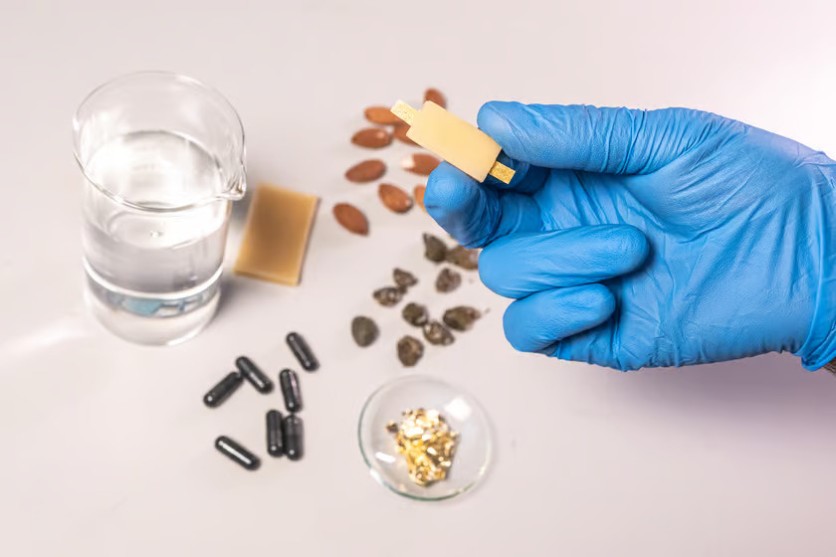Power up and chow down with these batteries! Researchers at the Istituto Italiano di Tecnologia (IIT) have created a groundbreaking new battery that is both rechargeable and edible.
The battery cell is made from materials that are commonly found in a person's daily diet and may have significant applications in health diagnostics, food quality monitoring, and even edible soft robotics.

Edible Electronic Materials
The edible battery is the brainchild of Mario Caironi, coordinator of the Printed and Molecular Electronics laboratory of the IIT Center in Milan. Caironi has been studying the electronic properties of food and its by-products in an effort to unite them with edible materials and create new edible electronic materials.
The ELFO Project, focused on exploring the realm of edible electronics, earned Caironi a 2-million-euro ERC consolidator grant in 2019.
To address the challenge of creating edible power sources, the IIT's research team drew inspiration from the biochemical redox reactions that occur in all living organisms.
They developed a battery that utilizes riboflavin (a form of vitamin B2) as an anode and quercetin (a common food supplement and ingredient) as a cathode. The team employed activated charcoal to enhance electrical conductivity and a water-based electrolyte.
They used nori seaweed as the separator to prevent short circuits, which is essential in every battery.
Potential Applications
The range of potential applications for the battery is broad and noteworthy, according to Caironi. For instance, it has the potential to be utilized in the creation of edible circuits and sensors capable of monitoring health conditions, as well as in powering sensors that can monitor food storage conditions.
Furthermore, owing to the high level of safety that these batteries offer, they could be used in toys for children, where there is a high risk of accidental ingestion.
The researchers are currently working on developing devices with greater capacity and reducing the overall size of the battery. These innovations will be tested in the future to power edible soft robots.
"This edible battery is also very interesting for the energy storage community. Building safer batteries, without the usage of toxic materials, is a challenge we face as battery demand soars," van Ilic, coauthor of the study, said in a press release statement.
"While our edible batteries won't power electric cars, they are proof that batteries can be made from safer materials than current Li-ion batteries. We believe they will inspire other scientists to build safer batteries for a truly sustainable future."
This breakthrough development in the field of edible electronics could have significant implications for health, food quality monitoring, and even the future of children's toys.
The battery's use of common dietary materials and its safety for ingestion make it an exciting prospect for further research and development.
Related Article : Engineers Develop a Novel Nanoscale 3D Material That Can be Produced at a Speed of 100 mm/s

ⓒ 2026 TECHTIMES.com All rights reserved. Do not reproduce without permission.




